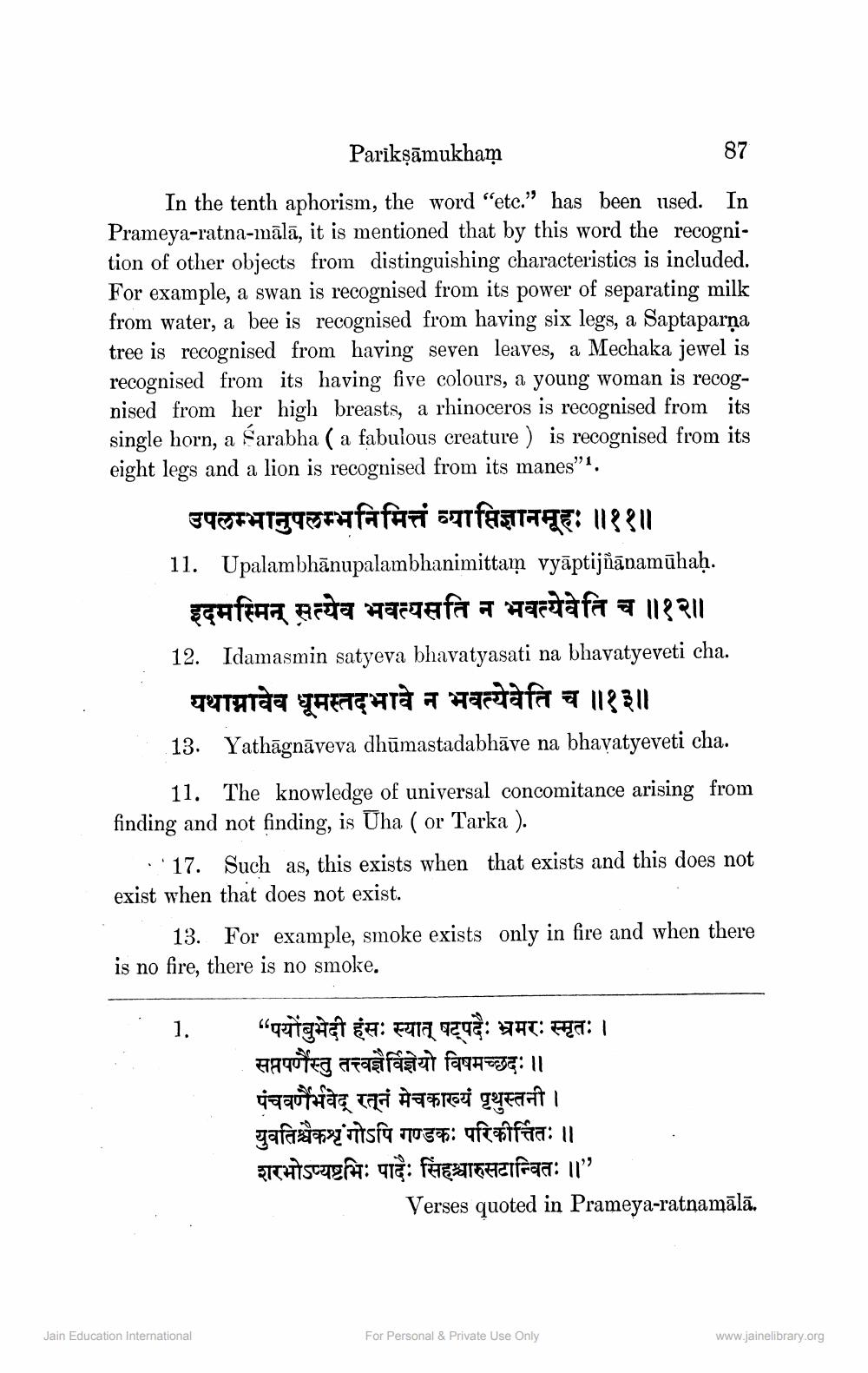________________
87
Parikşāmukham In the tenth aphorism, the word "etc.” has been used. In Prameya-ratna-mālā, it is mentioned that by this word the recognition of other objects from distinguishing characteristics is included. For example, a swan is recognised from its power of separating milk from water, a bee is recognised from having six legs, a Saptaparņa tree is recognised from having seven leaves, a Mechaka jewel is recognised from its having five colours, a young woman is recognised from her high breasts, a rhinoceros is recognised from its single horn, a Sarabha ( a fabulous creature ) is recognised from its eight legs and a lion is recognised from its manes”l.
उपलम्भानुपलम्भनिमित्तं व्यासिज्ञानमूहः ॥११॥ 11. Upalambhānupalambhanimittam vyaptijnanamāhah.
इदमस्मिन् सत्येव भवत्यसति न भवत्येवेति च ॥१२॥ 12. Idamasmin satyeva bhavatyasati na bhavatyeveti cha.
यथानावेव धूमस्तभावे न भवत्येवेति च ॥१३॥ 13. Yathāgnāveva dhūmastadabhāve na bhavatyeveti cha. ___11. The knowledge of universal concomitance arising from finding and not finding, is Uha ( or Tarka ).
. '17. Such as, this exists when that exists and this does not exist when that does not exist.
13. For example, smoke exists only in fire and when there is no fire, there is no smoke.
“पयोबुभेदी हंसः स्यात् षट्पदैः भ्रमरः स्मृतः । सप्तपर्णैस्तु तत्त्वज्ञैर्विज्ञेयो विषमच्छदः ।। पंचवर्णैर्भवेद् रत्नं मेचकाख्यं पृथुस्तनी । युवतिश्चैकशृंगोऽपि गण्डकः परिकीर्तितः ॥ शरभोऽप्यष्टभिः पादैः सिंहश्चारुसटान्वितः ॥” ।
Verses quoted in Prameya-ratnamālā.
Jain Education International
For Personal & Private Use Only
www.jainelibrary.org




